
Finland - miscellaneous train coaches
For a full scale picture, please click on the picture shown !
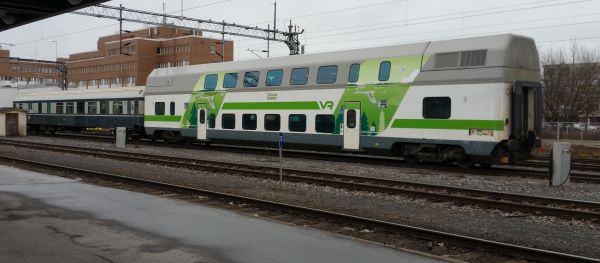
The shortest express trains in Finland are typically
just two coaches long. One is an old blue and grey coach from the 1960s with a small cargo department
and the other one is a modern doubledecker normally used in IC2 trains. Now in 2017 even these compositions have been
taken out of use. Time is over for the old light grey - blue coaches.
Picture in Oulu 20.5.2016 by Ilkka Siissalo
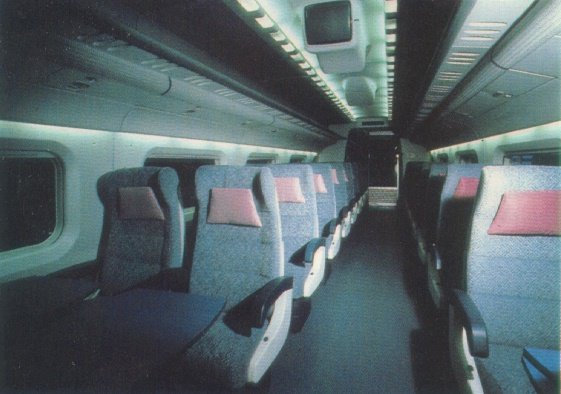
Sm3 Pendolino series train's passenger compartment at the time when the Pendolinos were new.
Photo by VR.
Uploaded Feb 16, 1998
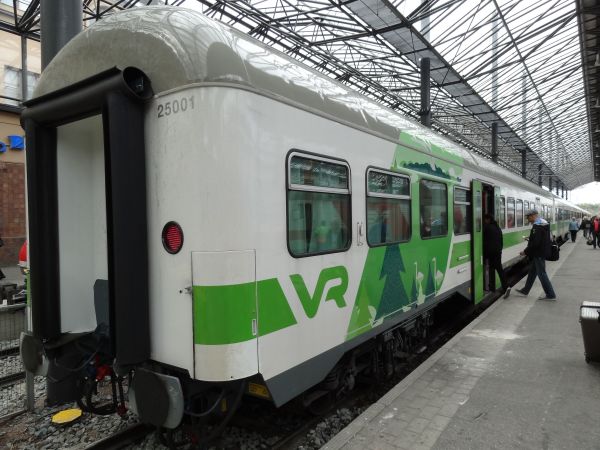
VR used in rush hour traffic locomotive hauled rakes of coaches of the class Eil instead of electric multiple units
in the very busiest times in the fairly long routes from Helsinki to Riihimäki and Lahti for many years. These coaches were
specifically built for commuter traffic. Originally they were dark red, but received later VR's new green and white livery.
In 2017 all these coaches were taken out of service. Picture at Helsinki main station 9.9.2011 by Ilkka Siissalo.
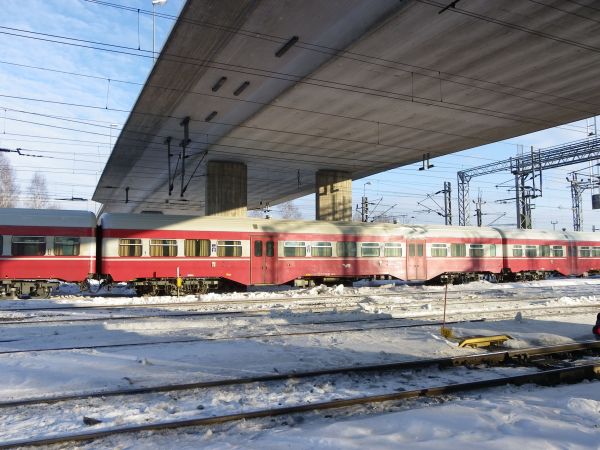
For comparison with the previous picture: This is what the locomotive hauled Eil carriage rakes originally looked like.
Picture at Riihimäki station 27.2.2011 by Ilkka Siissalo.
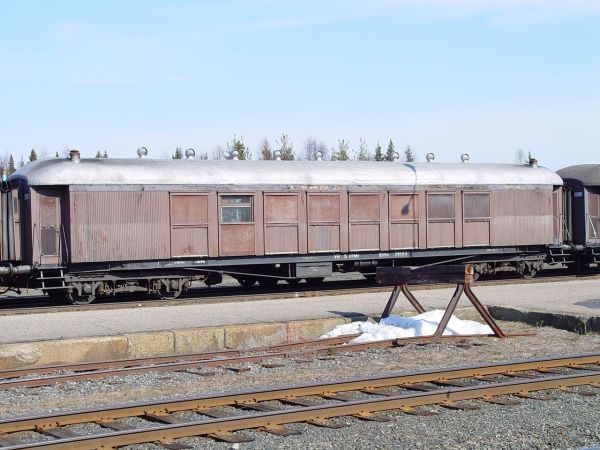
This is a piece of cold war history. When Russia won the war and forced Finland to "rent" a huge area of land, the so called Porkkala
enclave, to Russia as a military and naval base and put about 30 000 hostile soldiers thus in the immediate vicinity of the Finnish
capital city, this rental area also cut the Helsinki to Turku main railroad line. When express trains through the Porkkala area again
could start running, all the coaches were fitted with window shutters so that it was impossible for the passengers to see anything
in the Russian enclave area. There were armed soldiers in all coaches while the trains passed the Russian area. This was called
"the longest railroad tunnel in the world" as nowhere else passengers would have to travel for so long without seeing anything.
This is a pre-war VR class Eims coach, fitted with the blindfolds that the Russian army demanded. Picture 20.4.2003 in
Kontiomäki by Ilkka Siissalo.
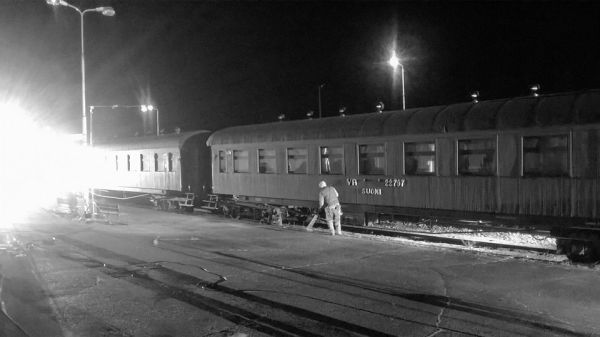
This picture looks like if it was from the 1930s, but in fact it is from 2016. This is a scene from filming "Hymyilevä mies Haapamäeltä"
(The smiling man from Haapamäki) with pure 1930s coaches.
Picture from Haapamäki 12.7.2016 by Jari Ylimmäinen.
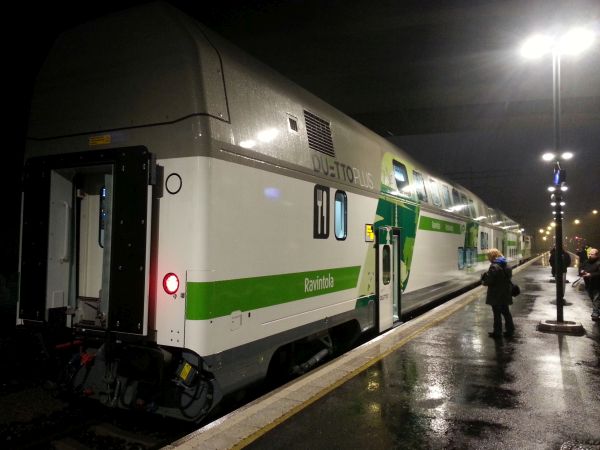
One of the newest coaches of VR is the doubledecker restaurant car "Duetto Plus". Picture in Ilmala, Helsinki 7.1.2014 by Ilkka Siissalo.
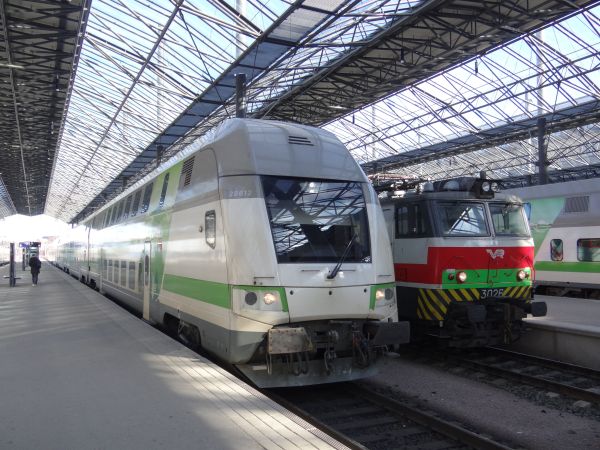
VR started using driving trailer coaches only recently. The class Edo coaches are built by Transtech, now a part of the Škoda group.
On the right one of the old Soviet built Sr1 locomotives. Picture at Helsinki central station 16.3.2016 by Ilkka Siissalo.
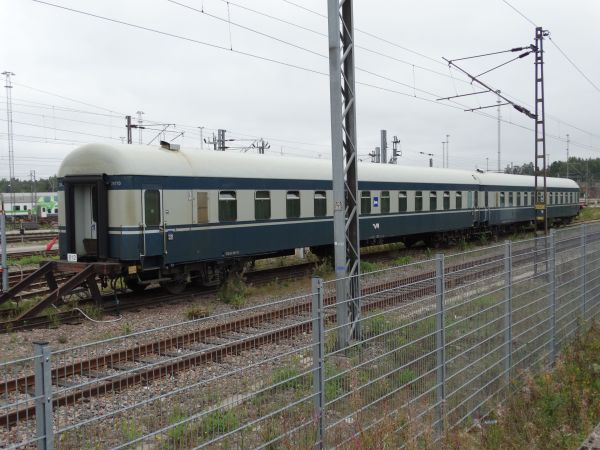
The blue and grey wagons were typical in all express trains in Finland in the 1970s and 1980s. These two are of the littera CEmt,
sleeper wagons that were used in the long routes from Turku or Helsinki in the south to Lapland. Now the old blue wagons are
almost all gone. A couple of these sleeper coaches can still occasionally be seen during the winter holiday season times in
trains to Lapland full of skiers.
Picture from the Ilmala depot in Helsinki 24.8.2016 by Ilkka Siissalo.
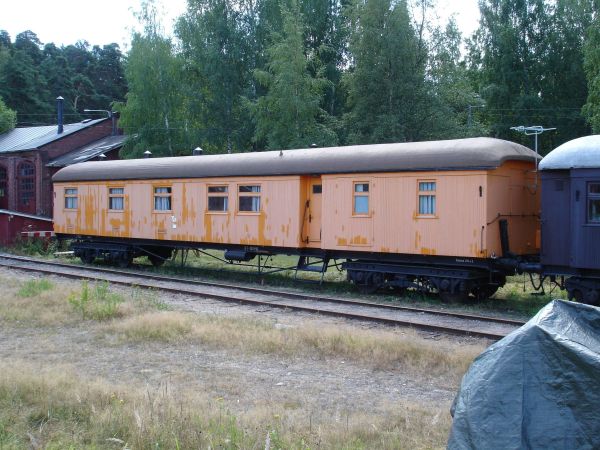
A 1930s express train post wagon class Bt, here at the museum railway depot in Porvoo.
Photo from Porvoo station 29.7.2006 by Ilkka Siissalo.
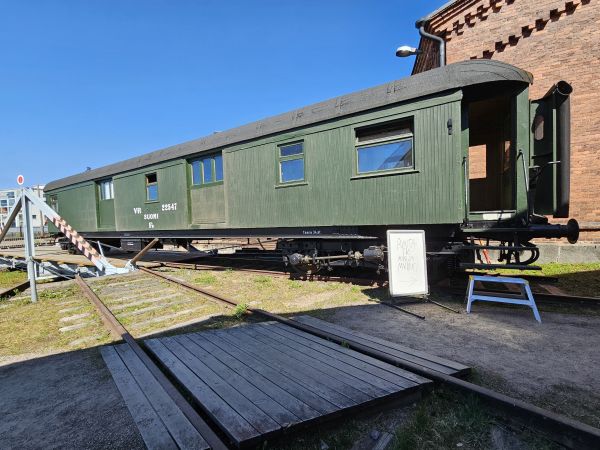
This one is a combined cargo, post and conductor's carriage of an express train, class Fo. These were common in express trains still in the 1950s
and early 1960s. Now this one was used by the railway hobbyist's association Topparoikka ry from Lahti. Topparoikka arranges miniature train exhibitions,
book sales etc inside this wagon.
Picture from the Finnish railway museum at Hyvinkää 18.5.2024 by Ilkka Siissalo.
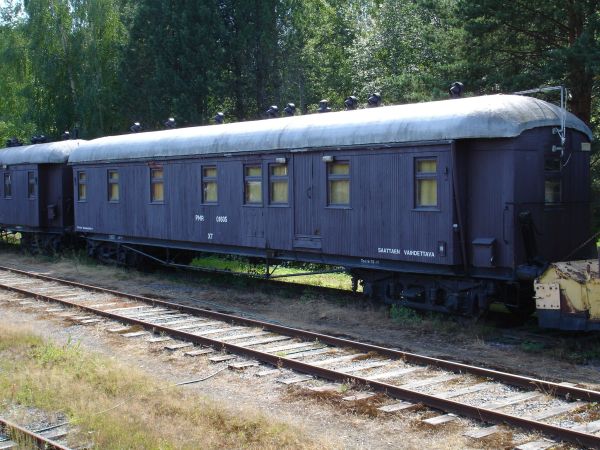
A 1930s express train sleeperette wagon, here at the museum railway depot in Porvoo, serving as kind of a hotel for the museum railway workers.
Photo at Porvoo station 29.7.2006 by Ilkka Siissalo.
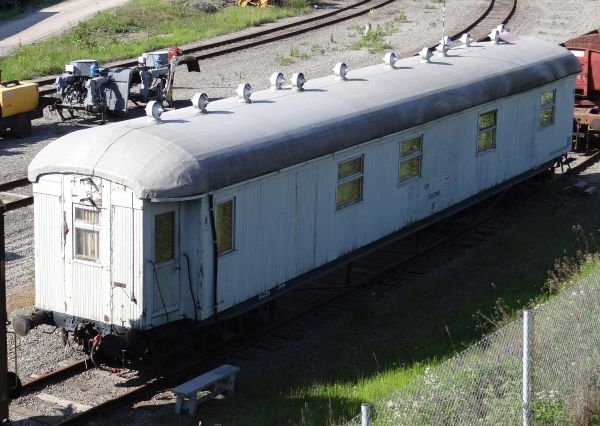
This coach had originally been a dark brown 100-seater express train coach of the class Ei from the 1930s, but it was in the beginning of the 1980s
converted to a crew car for the needs of workers doing track repair, overhead catenary repair or electrical installation work. Now it's called class Xt.
At this end nearest the camera there was first a small office space for the boss of the crew, then sleeping spaces for 4-5 men, then in the middle working
space and at the opposite end of the coach a kitchen and a sauna.
Picture from Turku 30.5.2016 by Ilkka Siissalo.
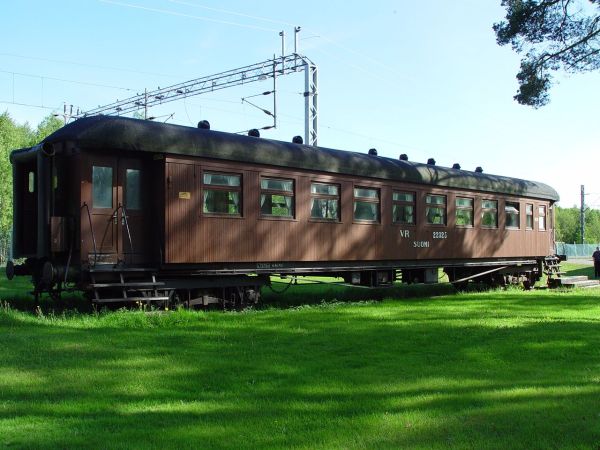
A 1930s express train wagon in excellent condition at Kovjoki station. Picture 13,6.2004 by Ilkka Siissalo.
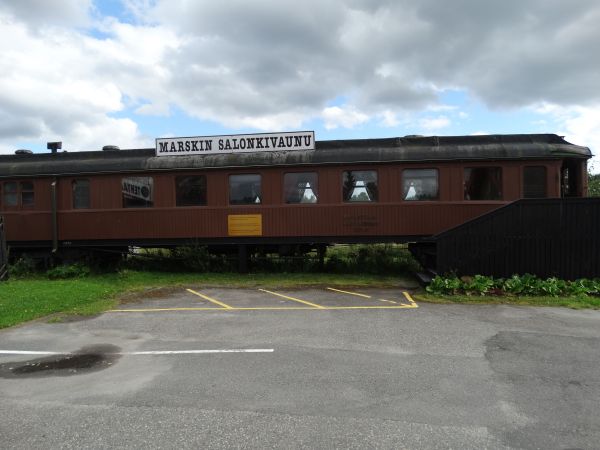
In 1942 when the that time leader of Finland, marshal C.G.E Mannerheim had his 75th birthday, Adolf Hitler decided to take the long trip
to visit him. Hitler took the dangerous trip flying with a Focke-Wulf Condor - a trip which by the way, very nearly cost Hitler's life
as the aeroplane almost hit a factory chimney. Hitler landed in Immola, close to Imatra. Hitler and Mannerheim met in Mannerheim's
saloon train coach on a side track near the Immola airfield on the 4th of June 1942. This is exactly that famous coach. Today it stands
forgotten at the backyard of a Shell petroleum station in Sastamala and it is used as a restaurant cabinet. The poor, valuable coach would
need immediate repairs and restoration. Picture in Sastamala 9.8.2016 by Ilkka Siissalo.
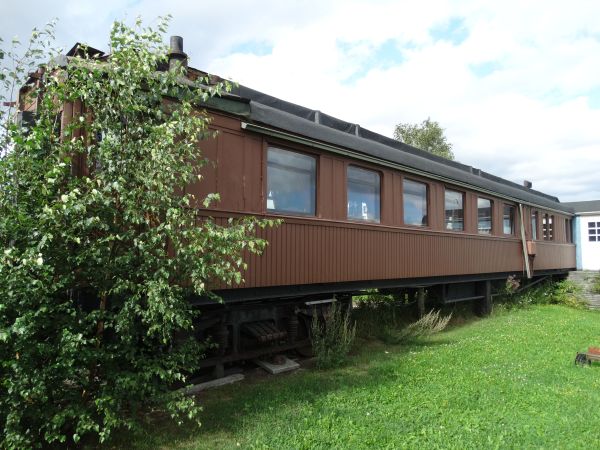
Another view of marshal Mannerheim's saloon coach as it is today. Picture in Sastamala 9.8.2016 by Ilkka Siissalo.
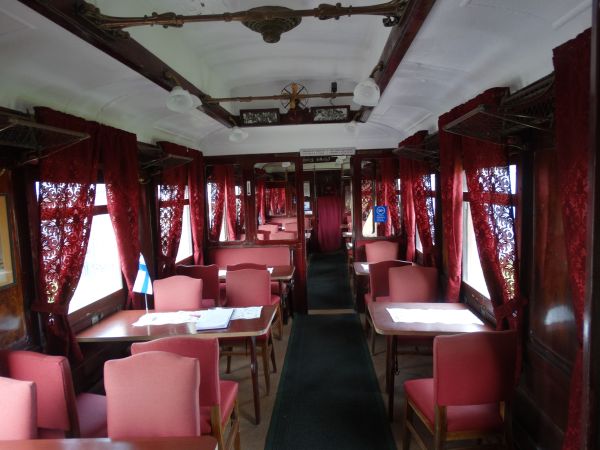
Inside view of marshal Mannerheim's saloon coach as it is today, used as a restaurant cabinet. Picture in Sastamala 9.8.2016 by Ilkka Siissalo.
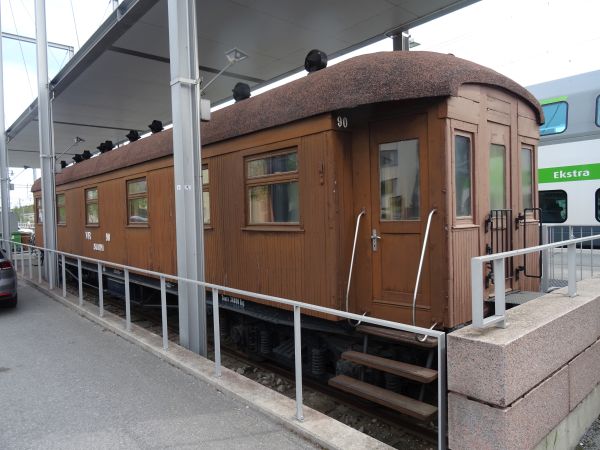
Marshal Mannerheim had several private wagons in his use during World War II. This is one of them. It has been restored and is being kept
as a monument in Mikkeli, where Mannerheim had his headquarters for a long time.
Picture from Mikkeli station 16.5.2023 by Ilkka Siissalo.
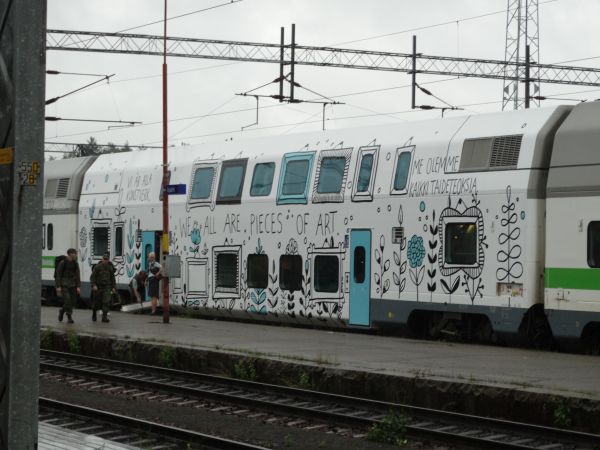
In 2017 VR launched an art competition for youngsters. The winner was a 16 years old girl from Vaasa and this is her work of art, an art coach,
with the text "We all are pieces of art". The coach was taped like this in March 2017 and here it is seen as a part of InterCity 70 from
Kajaani to Helsinki. Picture 12.7.2017 in Iisalmi by Ilkka Siissalo.
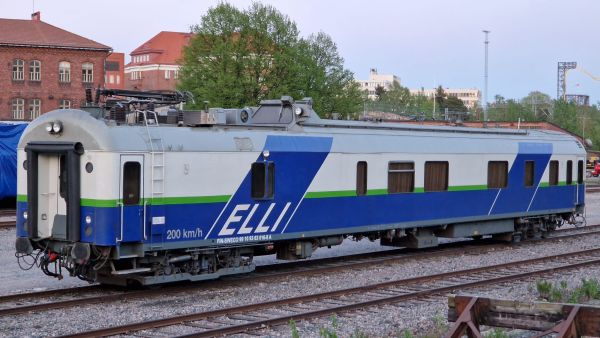
Aerial catenary wire inspection coach "Elli". It is operated by the private company Sweco.
Picture from Pasila, Helsinki 19.5.2024 by Matti Heino.

